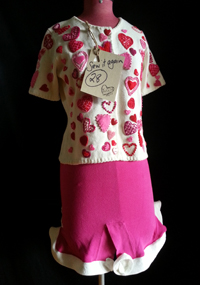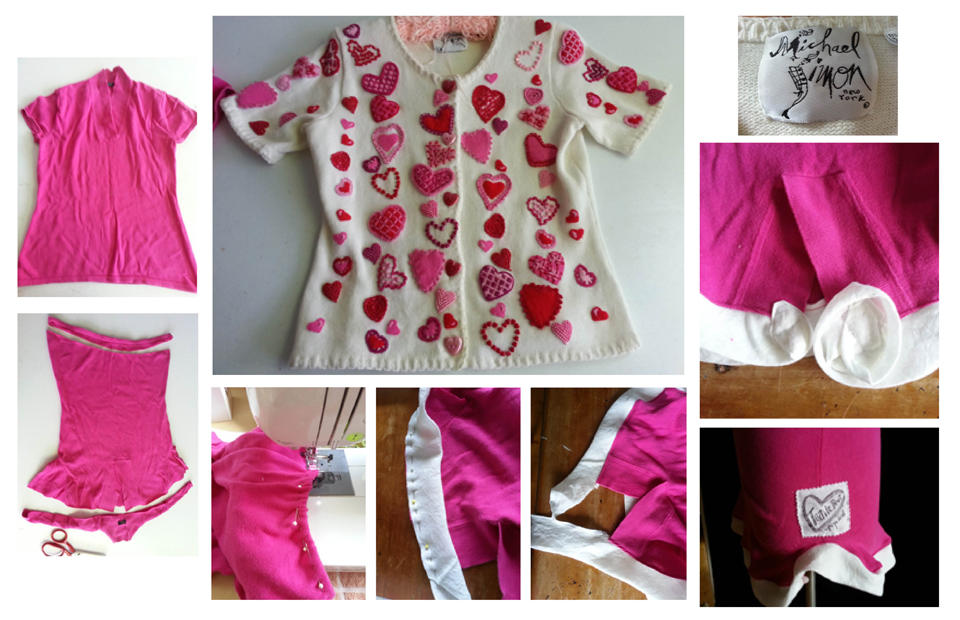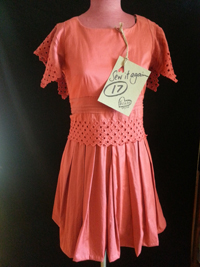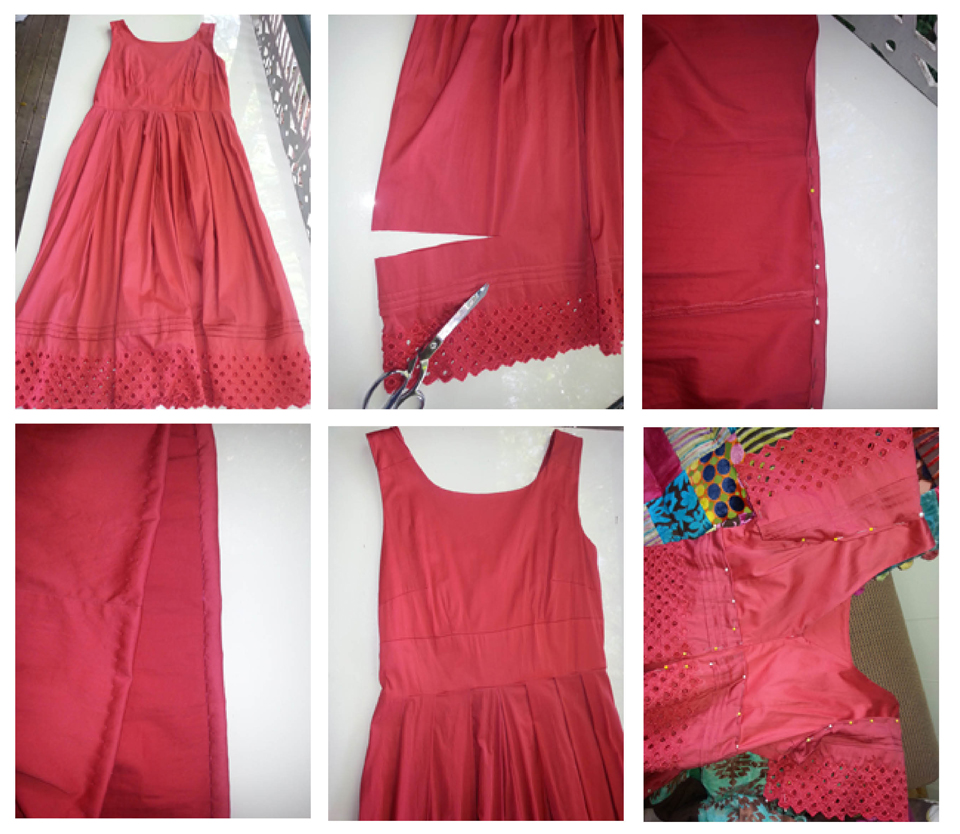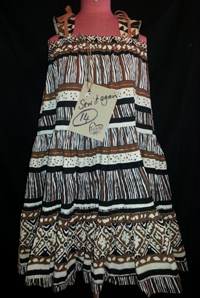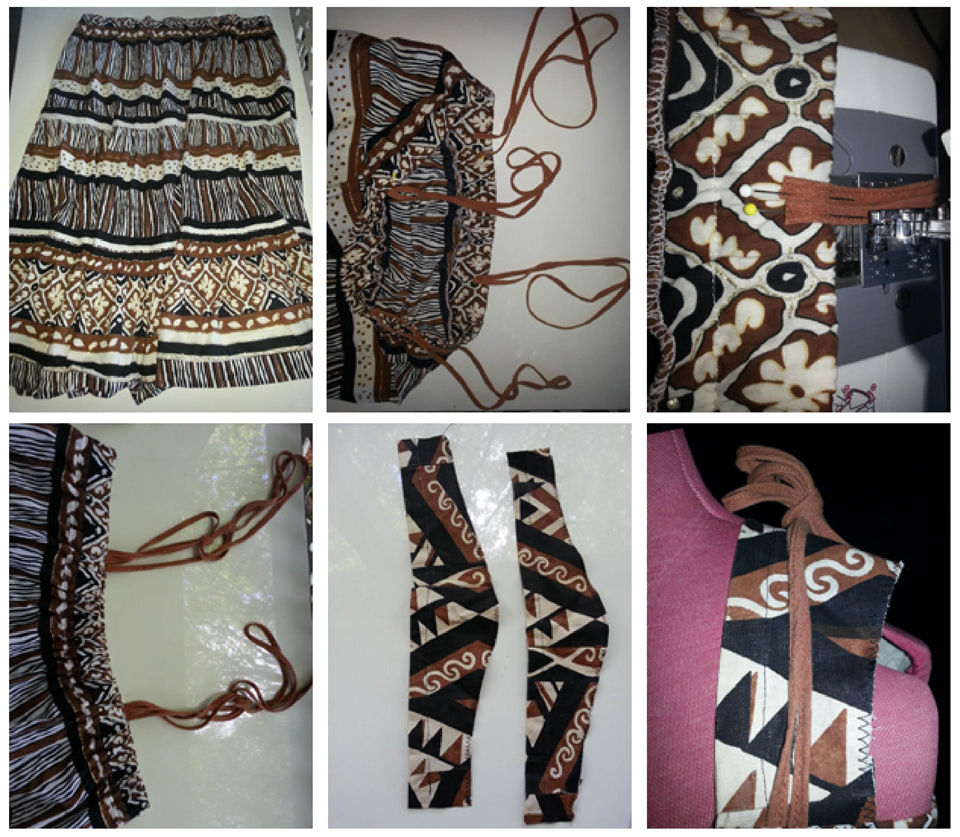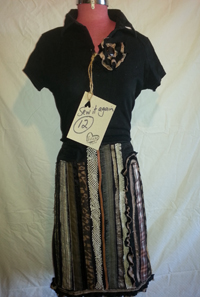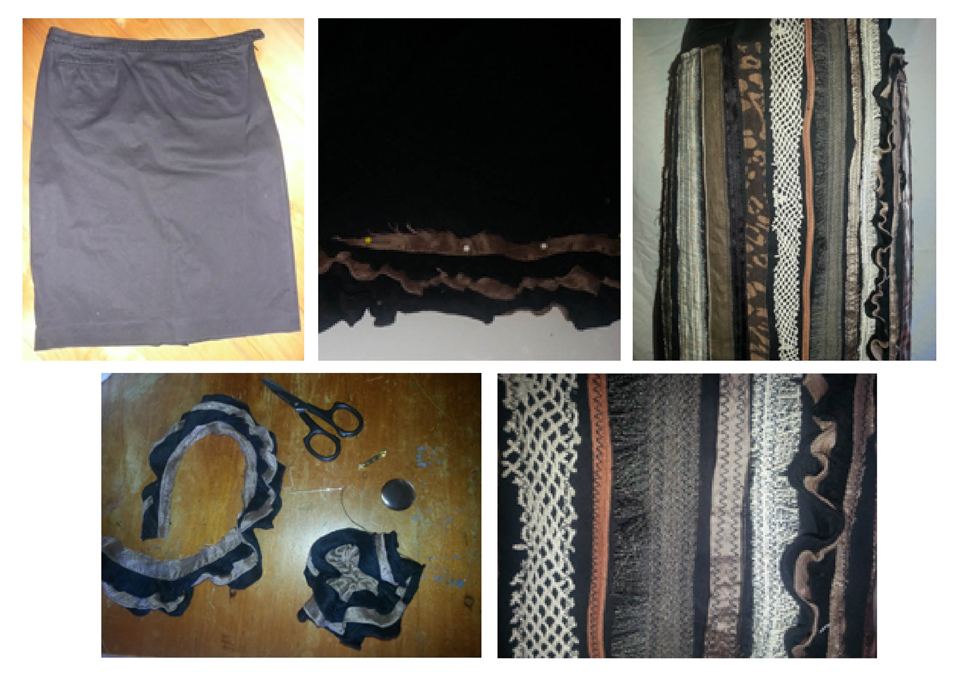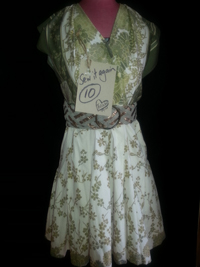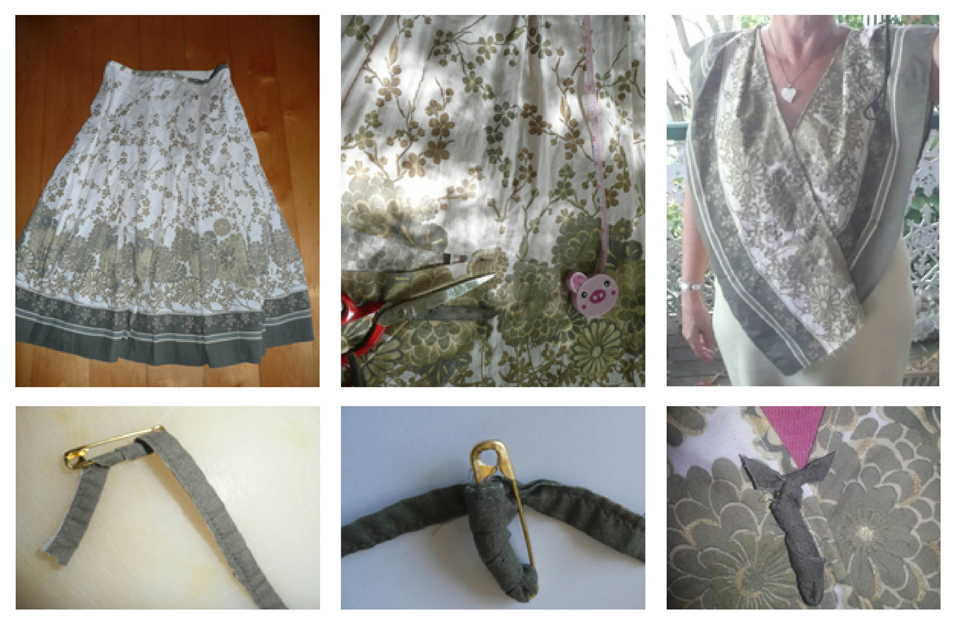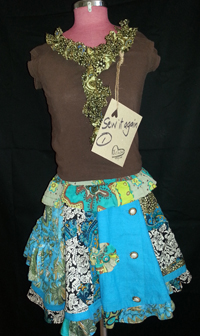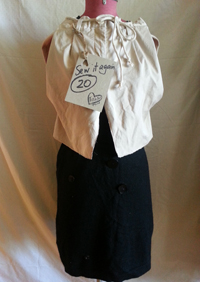 This outfit is cotton trousers turned crop-top and wool jumper turned skirt – with the top inspired by Junky Styling’s wardrobe surgery and the jumper-skirt being from my own imagination.
This outfit is cotton trousers turned crop-top and wool jumper turned skirt – with the top inspired by Junky Styling’s wardrobe surgery and the jumper-skirt being from my own imagination.
I’ve been upcycling on-and-off for decades but became more serious two years ago when I rediscovered op shops and took to ‘rescuing’ natural fibre clothing selling for a song – some perfect some dated or damaged but all worthwhile resources.
At one stage I had 100 wool jumpers, many more than needed for Brisbane’s mild winter, so I converted some into easy, comfortable skirts with the sleeves being used as neck scarves.
Five wardrobes later and doing leadership study last year, I looked around the world via the internet and came across the wardrobe surgery being done by Annika Sanders and Kerry Seager in London.
I discovered their book Junky Styling Wardrobe Surgery which ignited fresh ideas and affirmed my commitment to upcycling natural fibre garments for pleasure, reward and sustainability.
In Junky Styling, Annika and Kerry write: “Recycling worn, discarded, second-hand clothing involves taking a garment that already has an identity and looking at it as a raw material, studying the existing form and details, then applying them to a new design – a complete reinterpretation and disregard for the existing identify of the piece. This involves a vision and an understanding of form and functionality.
“We reckon that you can recycle anything, and it’s a wonderful way to engage our imaginations. With such a vast array of materials used in clothing, we have always maintained that distinction between ‘natural’ and ‘manmade’ fabric. The quality of natural textiles has always made them first choice for our raw materials. Our first clothing creation was made from a pure wool grey pinstripe suit; the feel, strength and durability of the cloth impressed and continues to inspire us. The cloth also helped to define the identity of Junky Styling as a ‘new take on tailoring’. With no attention paid towards promoting an image or branding, the raw materials spoke for themselves and showed that Junky Styling was all about lasting quality and sustainability.
“Recycling is extending the life of an item. Nothing exceeds its ‘sell-by date’ – the date just changes and keeps changing, continually updating until the fabric falls apart.” View video clip here.
We all have unworn clothing in our wardrobes and my 365-day Sew it Again project is demonstrating how you can update yours using simple home-sewing techniques.
This jumper skirt was an old wool pullover – conversion technique shown in my Stitch in Time column October 2013 – the holes in which were covered by sewing on buttons. The black singlet was a cotton lycra off-cut with seams just zigzagged to finish. With the Country Road trousers, I cropped the legs off, cut away the inside seams and zigzagged around the bottom edges. I created armholes by cutting away the pockets and extending the opening by unpicking the side-seam until it was comfortable. I found a cord in my string box and used it to draw in the waistband/neckline.
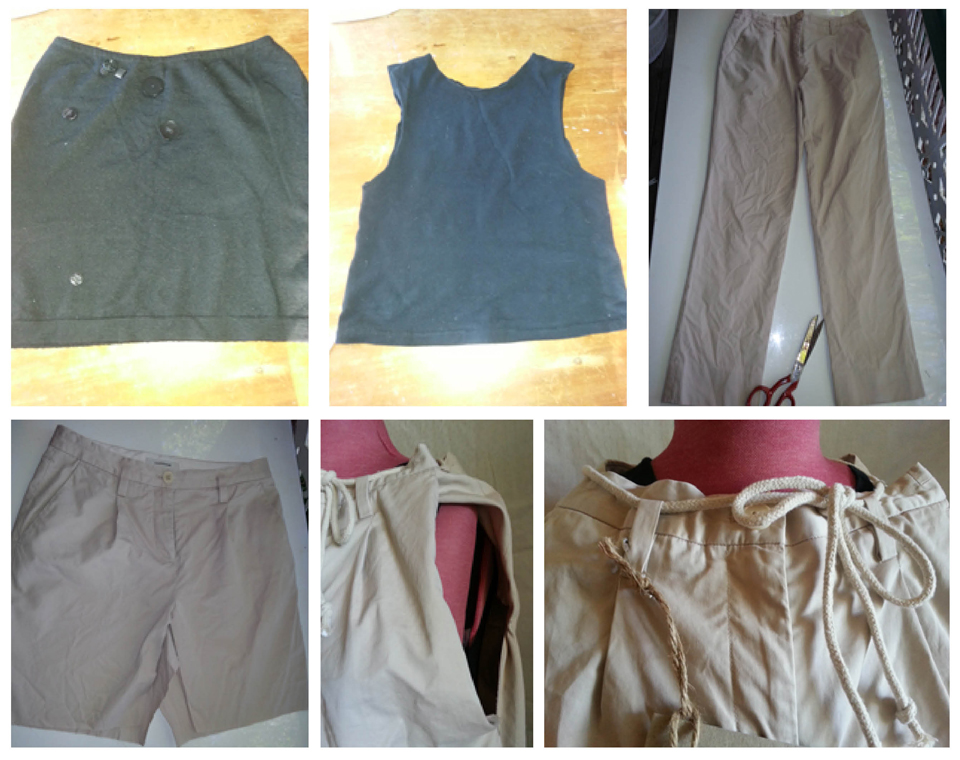
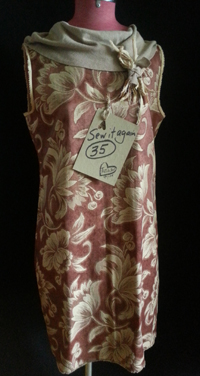 This op shop dress was done over by shortening it, taking pinking shears to the armholes then adding a knit-fabric collar cut from the bottom-half of an op shop vest.
This op shop dress was done over by shortening it, taking pinking shears to the armholes then adding a knit-fabric collar cut from the bottom-half of an op shop vest.